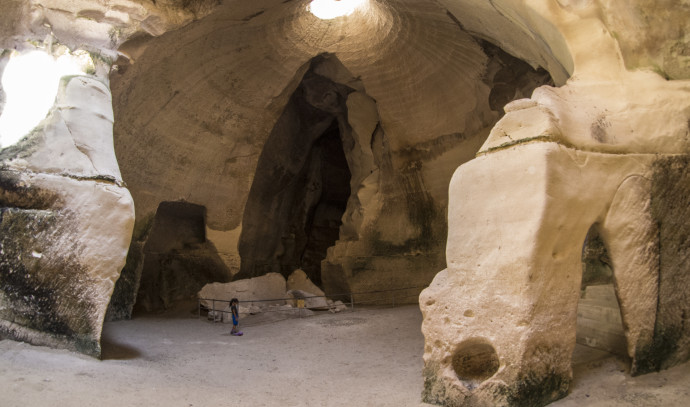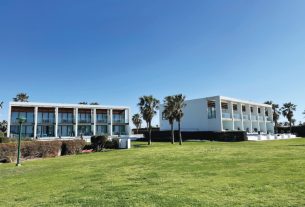Thousands of years after it was last heard in the region, the ancient language of Proto-Semitic is ringing out once again, in a unique audiovisual project at the bell caves at the Beit Guvrin National Park in central Israel.
Israeli multimedia artist Dor Zlekha Levy created One Tongue, an audiovisual display that centers around a musical performance in Proto-Semitic, the ancestor of today’s Semitic languages: Amharic, Arabic, Aramaic, and Hebrew.
Inaugurated on Tuesday, the display was designed for the special acoustic qualities of the ancient manmade bell caves. The Beit Guvrin National Park, declared a World Heritage Site by UNESCO in 2014, is home to more than 500 such caves, which were used for multiple purposes.
Zlekha Levy told The Media Line that he found inspiration for the project from his passion for ancient languages, which he believes serve as common ground for all people, and from his family history, describing his roots as both Arab and Jewish.
“It made me look for the roots, the Arabic roots, and the Hebrew roots as well, and Proto-Semitic is this common ground,” he said.
Zlekha Levy said that both the main challenge of the project and its greatest gift came from the fact that Proto-Semitic existed so long ago that no one today really knows what the language sounded like. This gave him the freedom to use his imagination, combined with the research of linguists and historians, to reconstruct the ancient tongue and write song lyrics in it.
Song composer Tomer Damsky, who also served as the director of the choir that performed it, told The Media Line that it was a unique experience to participate in the revival of such an ancient language.
“I’m used to singing in languages that I don’t speak; this is a lot of what choral directors and singers do,” she said. “But this is a language that no one knows how to speak. So this was really the main challenge, to try to understand how it sounds musically, and what is the correct musical pronunciation of this language, because it is only a reverse engineered language.”
For Zlekha Levy, the beauty of the song in the reconstructed language is that it can include different voices with different characteristics and that while each is unique, all of them combined and played within the acoustics of the cave form a whole new experience that allows each voice to conserve its authenticity. He said that the real experience is “when you go through the cave and listen to the different sounds, how they are connecting, and how it affects your body.”
Damsky says the project has many messages.
“You can easily read it as a unifying message of peace and getting together but I think there is more than that about it,” she said. She added that it is interesting “to get into the genetic complexities of language and communities through the differences of different languages and to unpack the differences between people through the genome of their sounds.”
But Damsky says the most important thing about the project was the way that voices meet inside the acoustic space of a cave.
“This is kind of how we as people who live in the present connect to people who might have lived in this area in the past,” she said.
Beit Guvrin caves’ special acoustics amplify art
Tomer Saragusty, the manager of the Beit Guvrin site, told The Media Line that there is a reason why the caves have such special acoustics. In ancient times, he said, people would choose the place with the best acoustics to draw on the walls there, as the site was not only about drawing but also about prayer and the way they viewed their gods.
Zlekha Levy said his favorite line in the song, which is repeated constantly, translates as “salt, water, onion, garlic.” He said this “is like a mantra that you repeat to avoid bad luck.”
Saragusty said the One Tongue installation is open at night through November. Night hikers will be offered a complete multisensory experience—walking between the caves, listening to the music, and drinking wine from vineyards in the surrounding area, which will be sold at the park.
“Great art, great wine, great nature; it’s going to be beautiful,” he said.



